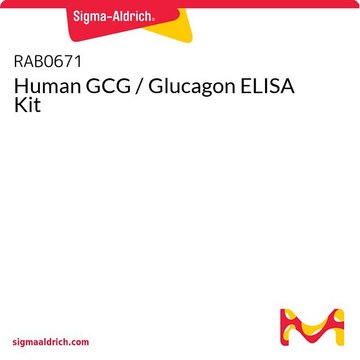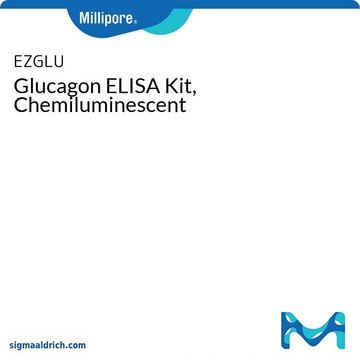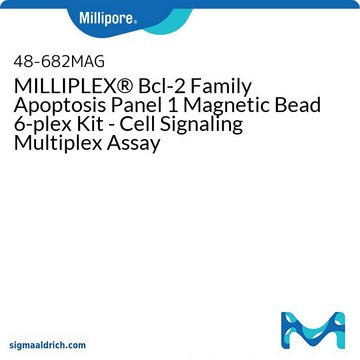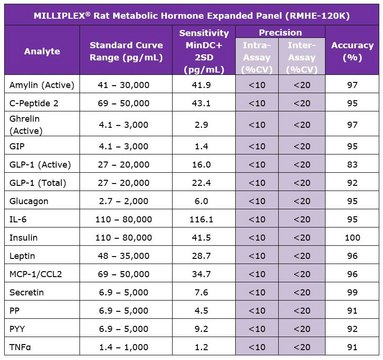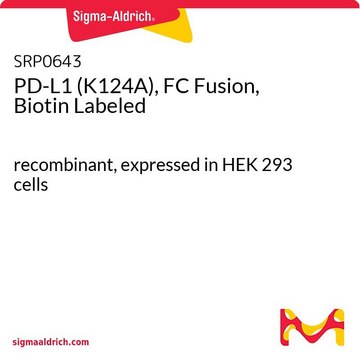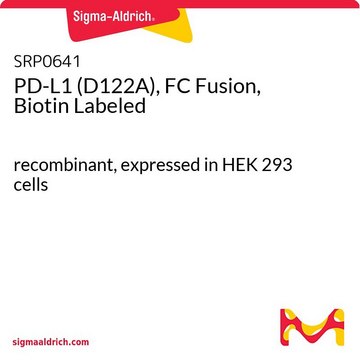03-0153-00
SMC® Glucagon High Sensitivity Kit
1 kit sufficient for 96 wells, input: plasma
Synonym(s):
Glucagon Single Molecule Counting Kit, Glucagon ultra-sensitive immunoassay, Pro-glucagon immunoassay kit
About This Item
Recommended Products
usage
kit sufficient for 96 wells
species reactivity
rat, human, mouse
manufacturer/tradename
SMC®
assay range
sensitivity: 0.78 pg/mL
(lower limit of quantification)
inter-assay cv: <20%
intra-assay cv: <15%
standard curve range: 0.20-200 pg/mL
technique(s)
ELISA: suitable
single molecule counting: suitable
input
plasma
compatibility
for use with SMCxPRO® and Erenna (validated)
shipped in
wet ice
storage temp.
2-8°C
Related Categories
1 of 4
This Item | SRP0643 | SRP0641 | SRP0635 |
|---|---|---|---|
| recombinant expressed in HEK 293 cells | recombinant expressed in HEK 293 cells | recombinant expressed in HEK 293 cells | recombinant expressed in HEK 293 cells |
| mol wt 54 kDa | mol wt 54 kDa | mol wt 54 kDa | mol wt 54 kDa |
| form frozen liquid | form frozen liquid | form frozen liquid | form frozen liquid |
| Gene Information human ... CD274(29126) | Gene Information human ... CD274(29126) | Gene Information human ... CD274(29126) | Gene Information human ... CD274(29126) |
| storage temp. −70°C | storage temp. −70°C | storage temp. −70°C | storage temp. −70°C |
| shipped in dry ice | shipped in dry ice | shipped in dry ice | shipped in dry ice |
General description
Assay protocols are similar to existing sandwich ELISA methods with two key differences:
1) Elution buffer disrupts the sandwich, separating the labeled detection antibody for quantification.
2)The Erenna and SMCxPRO® immunoassay systems detect analytes using Single Molecule Counting (SMC®) technology.
Specificity
Oxyntomodulin (human) was found to be <0.5% detectable.
GLP-1 (human) was not found to be detectable.
GLP-2 (human) was not found to be detectable.
GIP (human) was not found to be detectable.
Legal Information
Disclaimer
signalword
Danger
Hazard Classifications
Acute Tox. 4 Dermal - Acute Tox. 4 Inhalation - Acute Tox. 4 Oral - Aquatic Chronic 3 - Eye Irrit. 2 - Repr. 1B - STOT RE 2 Inhalation
target_organs
Respiratory Tract
Storage Class
6.1C - Combustible acute toxic Cat.3 / toxic compounds or compounds which causing chronic effects
Certificates of Analysis (COA)
Search for Certificates of Analysis (COA) by entering the products Lot/Batch Number. Lot and Batch Numbers can be found on a product’s label following the words ‘Lot’ or ‘Batch’.
Already Own This Product?
Find documentation for the products that you have recently purchased in the Document Library.
Our team of scientists has experience in all areas of research including Life Science, Material Science, Chemical Synthesis, Chromatography, Analytical and many others.
Contact Technical Service
